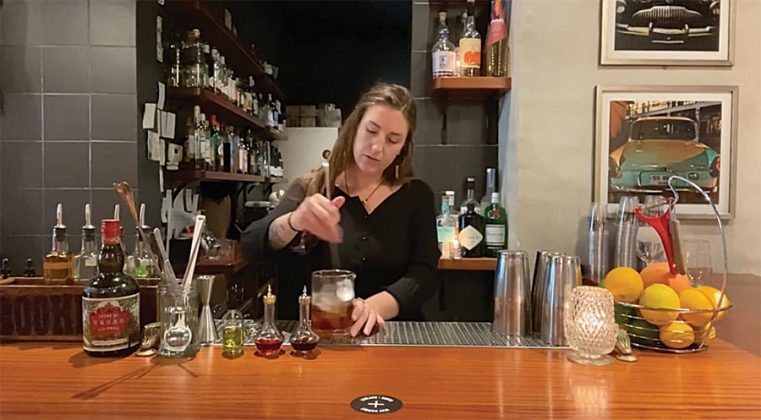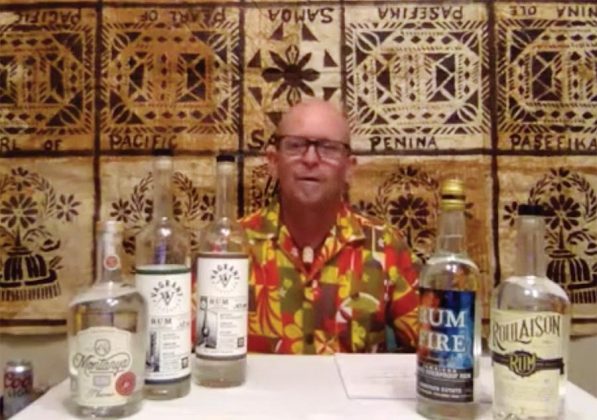ADI was among the earliest trade organizations to make the call to postpone and then go digital with their annual conference. It was a tough call in one sense, reports Anne-Sophie Whitehead, conference director, but it made more sense than facing the possibility of no conference at all this year. In addition to redesigning the conference for an online setting, ADI instituted a “pay-what-you-can” system to accommodate attendees who might be more cash-strapped than in previous years.
“We decided to pivot early for everyone’s safety,” Whitehead explains. “We were the first in the industry to do it, and we made it a collaborative win by working with our speakers and vendors to deliver the same great content people are accustomed to from our face-to-face conference.”
I’ll admit personally that I was skeptical. Of course, we all want these things to go well and provide value for everyone, but we also all have experience, now, with how badly digital meetings can go. Think of the Progressive commercial that parodies how long it can take to accomplish so little in a Zoom meeting.
And there’s no denying that things were not smooth as silk. The streams were sometimes laggy or jilted, the frames sometimes reorganized themselves for no obvious reason and I know I wasn’t the only person who got confused by the way the app displayed the times for the sessions.
That said, this was still a very rich, enjoyable conference. This owes, I think, to two main factors. First, ADI did its due diligence in trying to pre-record as many presentations as possible beforehand. This has become a digital meeting best practice because it reduces the chances for technology breakdowns. It also allows the presenters to hang out in chat and respond to participants in real time.
Second, you, the participants, were dead set on having a good conference. There was a lot of grace and patience and positivity in the chat bar, and when things went awry you rolled with it, refreshed your browsers and got back into it. Spirits people are good people like that.
The New Orleans conference had been on track to have 2,000 registrants; the Virtual Conference managed to draw 1,600 people and to feature over 100 exhibitors in the virtual exhibit hall out of an anticipated 170 in the physical space. Considering they were pulling this together in a matter of weeks, Whitehead and her team felt they could call it a success.
“I am very proud of the team,” Whitehead says. “We acted responsibly and with fairness to support the industry’s need for safety and education and found a way to make it a reality. We were supported by many sponsors and exhibitors who shared our vision for the greater good of the community and trusted that we would do our best for everyone under the circumstances.”
Something To Celebrate
ADI President Erik Owens presented the 2020 Bubble Cap Award, honoring an outstanding ADI member distillery, to Spirit Works Distillery of Sebastopol, CA.
Owens said Spirit Works co-owners and husband-and-wife team Ashby and Timo Marshall are leading the way in converting American consumers to the traditionally British spirit known as sloe gin. Timo Marshall served as president of the California Artisanal Distillers Guild and led the effort to pass legislation allowing direct-to-consumer sales.
“In the past few years, our local community has been threatened by floods, wildfires and now this weird pandemic,” Timo said. “We’ve managed not to lose sight of why we built Spirit Works. This award and the recognition that comes with it is humbling beyond measure.”
Ashby added, “Timo and I can’t begin to tell you how proud we are of the team here,” and then turned the camera to show their crew, masks on, gathered in the background.
RTDs
Ready-to-drink cocktails were the fastest-growing spirits segment last year, even if you don’t count hard seltzer. (Because, why would you? But consumers tend to lump them together.) Two sessions dealt directly with RTDs, why they’re popular and how to make them.
According to Keli Rivers of Sipsmith Gin, the category has actually been around since the late 1800s when a bar bottled Manhattans they’d prepared for a picnic that got cancelled.
Of course, they haven’t always been as wildly popular as they are now. Virginia Miller of The Perfect Spot admitted to being a reluctant convert: “When one is well done, there’s such a huge market: picnics, sitting in the park, or for many people, they can’t make a great cocktail at home.”
Aaron Polsky of LiveWire pointed out that RTDs can be a great way for a bar to feature a bartender and for a bartender to diversify his or her income.
Science of Spirits
Among several panels presenting the findings of scientific studies on aspects of fermentation and distilling, Shawn Patterson of Good Libations gave a surprisingly fascinating talk on “Water: The Endgame for Distilled Spirits.”
Good Libations took their previous water studies to the next level and discovered that “proofing water may be an effective tool to modify the chemical composition of distilled spirits.” In other words, your proofing water is not a neutral variable in your production process. Indeed, the same proofing water will have different results in different spirits.
“It is likely that the water selected to proof a spirit is the distiller’s final move in finishing a distillate,” Patterson announced.
The Rum Summit
The final day of the conference was dedicated to all things rum, from the history and care of sugarcane to the rum cocktail craze of the early 20th century to the various forms of rum derived from different parts of the plant and different processes.
Jonny VerPlanck of Vagrant Distiller sampled several rums to show how the “same” spirit can taste clean and peppery if it’s made from mostly refined sugar, smoky and chocolaty if from molasses and Belgian beer and Brett yeasts, or light and grassy and citrusy if from fresh-pressed cane juice.
Karen Hoskin, whose Montanya Distillers is the only B-Corp certified rum distillery in the world, described the lengths she goes to satisfy herself that her rums are responsibly produced, including working closely with a co-op in Louisiana for sustainably sourced sugarcane.
“For me as a B Corp,” she says, “I have to think about the lives and the livelihoods of the people who are harvesting the sugarcane, living near the sugarcane fields, drinking the water that flows out of the sugarcane fields and interacting with the air around the fields.”
The Future Is Virtual
One panel specifically featured distillers putting the virtual environment to good use during shutdown by creating online experiences. Nels Wroe explained how Dry Land Distillers created virtual tasting kits not only for customers but for retailers and restaurants, too, as a way of staying relevant.
Most panelists pivoted to virtual out of necessity and a desire to stay engaged with their customers, but over time they learned to develop more specific goals such as pursuing existing markets or sales targets or retaining their staff.
All of the panelists said they expected to continue to offer virtual experiences even when shutdown orders are lifted. That suggests that, if you haven’t gone virtual yet, it’s time to get in the game.
The general consensus was that virtual experiences will play an increasingly important role in the spirits industry. Certainly, some attendees were excited by the opportunity the virtual conference offered.
Felicia Keith-Jones of High Mark Distillery, for instance, had never attended an ADI conference before, though she’d heard they were good. This year, the virtual format made it easier for her to finally pull the trigger. “Now I’m hooked,” she says. “This is great information, and I plan to attend live next year!” END
ADI members can access a majority of the 2020 educational breakout sessions online, for the remainder of the year through the link https://distilling.com/resources/videos.












